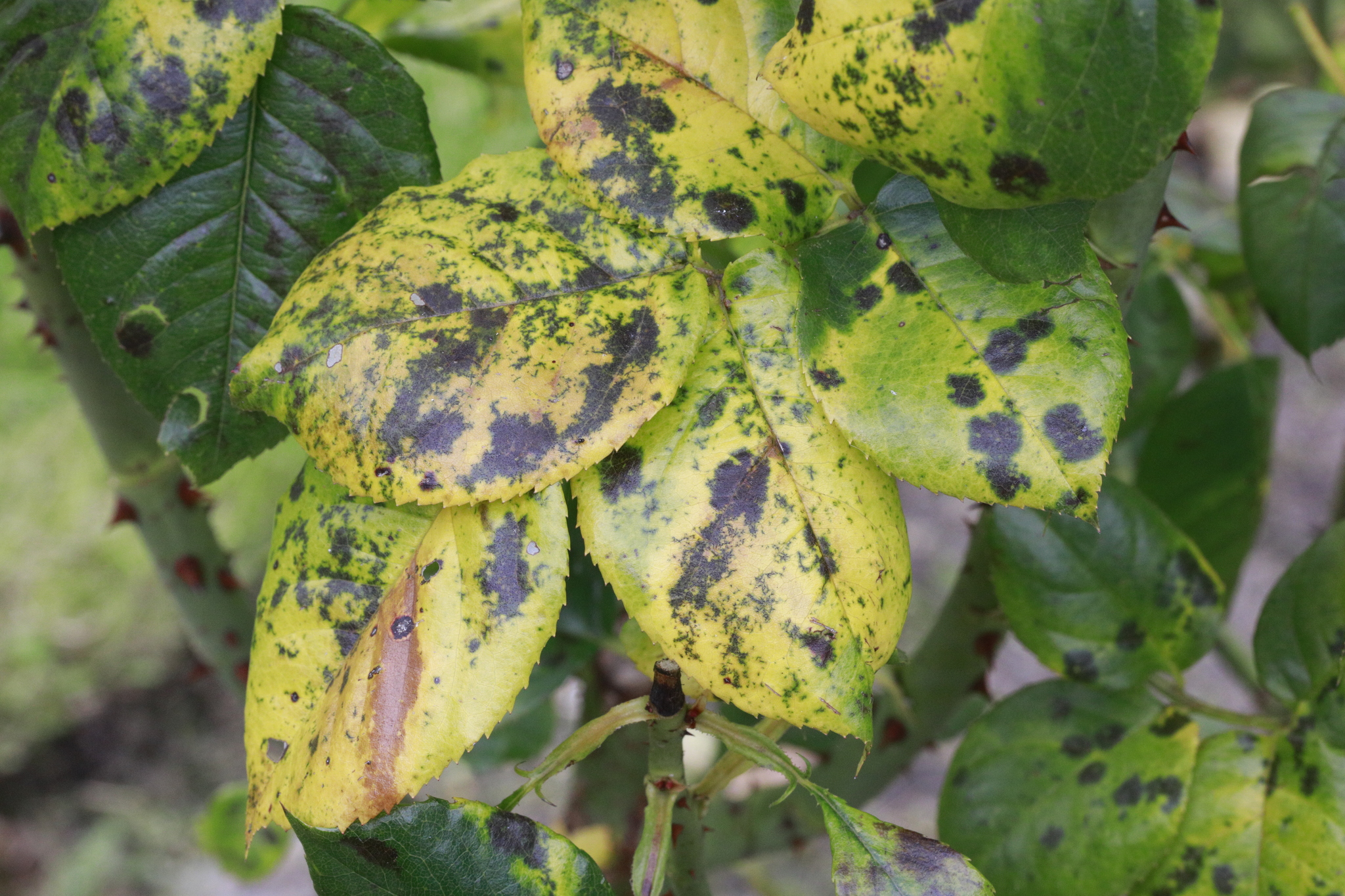
Black spot
Diplocarpon rosae
What is Black Spot (Diplocarpon rosae)?
Black spot is a serious disease caused by the fungus Diplocarpon rosae, primarily affecting roses. It is distributed worldwide and can infect various rose species and cultivars. Symptoms include rapidly enlarging purplish or black patches on the upper leaf surface, yellowing of leaves around the spots, premature leaf drop, and the appearance of small black lesions on young stems.
Black spot reproduces by creating tiny particles called spores. These spores are released from infected leaves and can travel through the air or water. When these spores land on other rose plants, they can cause new infections. The fungus can also survive in fallen leaves or plant debris during winter and infect plants again in the next season. This process keeps the disease going and spreading among rose plants.
Symptoms
1 - Effects on Plants
Black spot can have detrimental effects on plants. Severe infections can lead to significant leaf loss, reduced plant vigor, and an overall decline in the health of the affected roses.
Solutions
1 - Cultural Control
1. Collect and destroy fallen leaves in autumn or bury them under a layer of mulch. 2. If possible, pick off and dispose of any leaves that remain on the plant over winter. 3. Prune out all stem lesions in spring before leaves appear. 4. Practice good garden hygiene and promptly remove any diseased growth and debris. 5. Encourage or introduce natural enemies of the fungus.
2 - Chemical control measures
1. Fungicides like tebuconazole, tebuconazole with trifloxystrobin, and triticonazole are labeled for the control of rose black spot. 2. Some products contain a combination of insecticide and fungicide, providing control against harmful insects and the disease. When using fungicides, always read and follow the instructions on the product label carefully.
